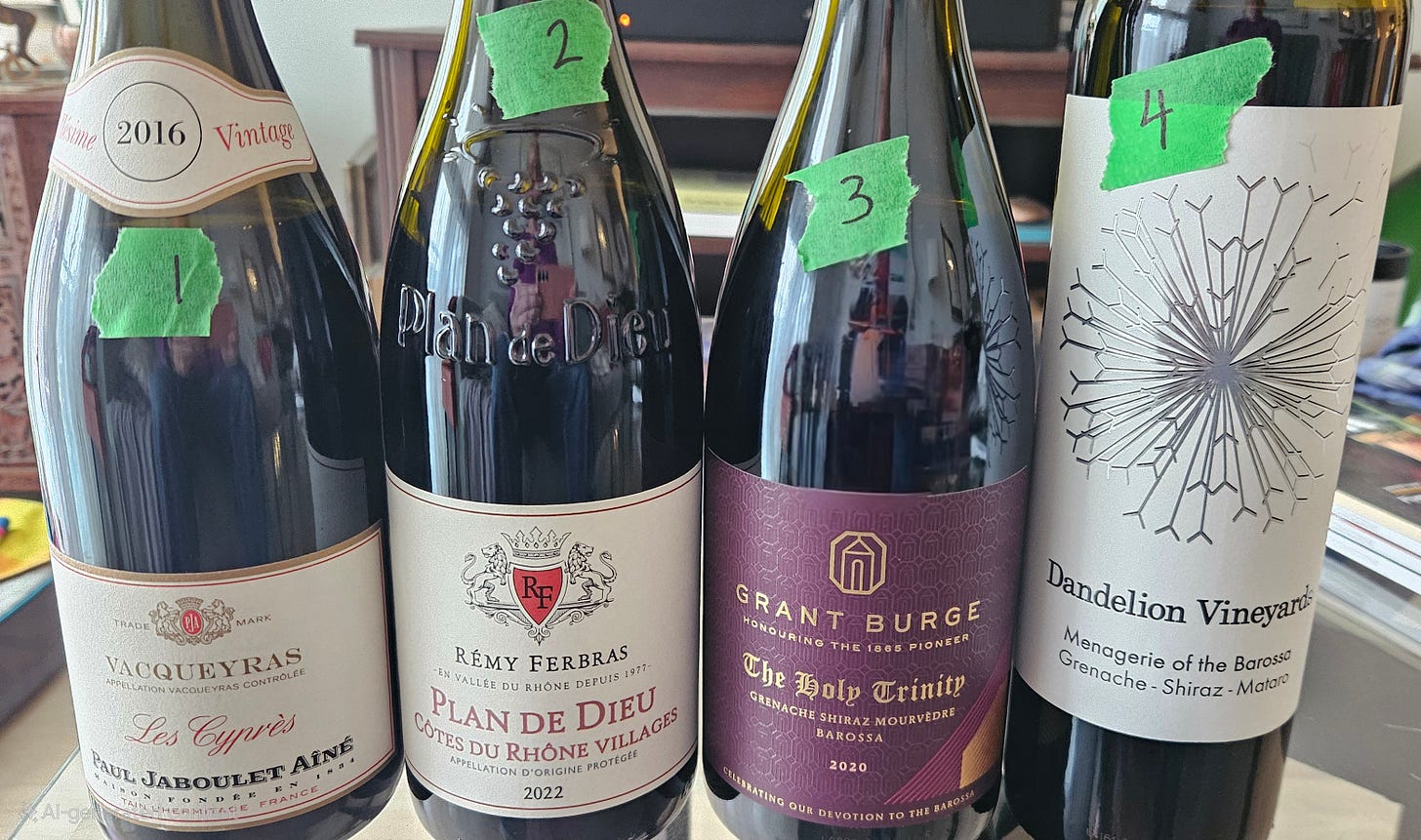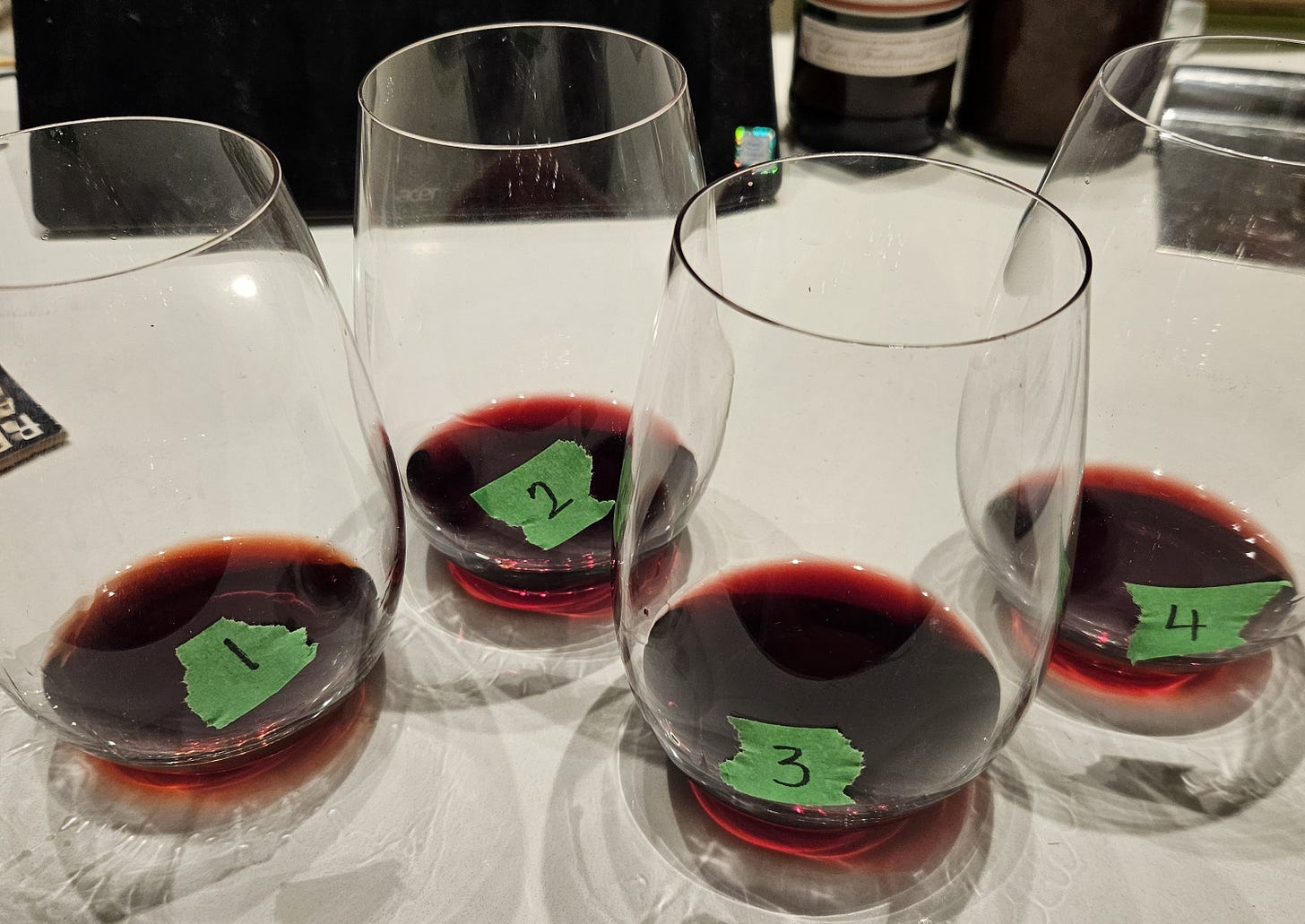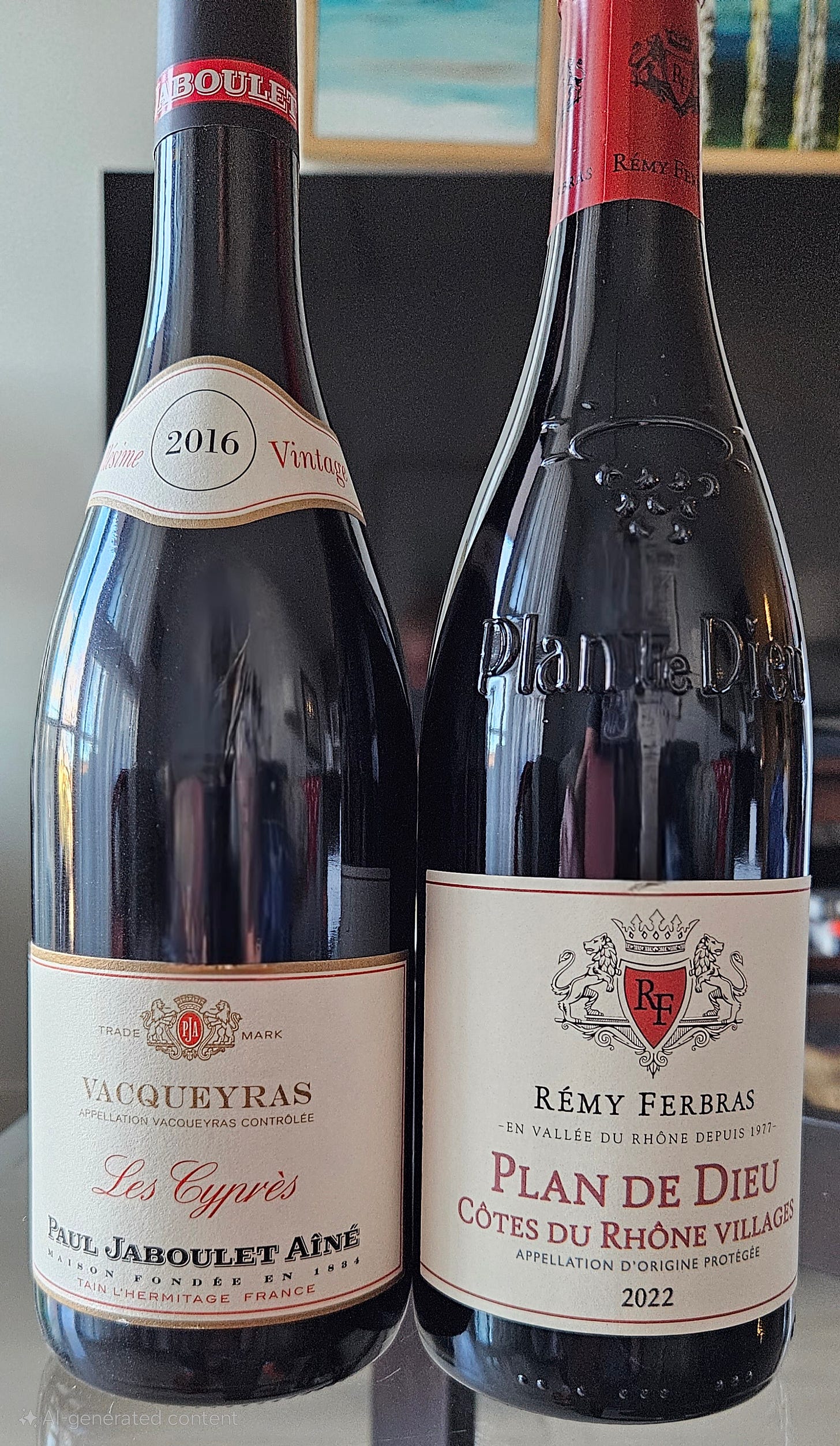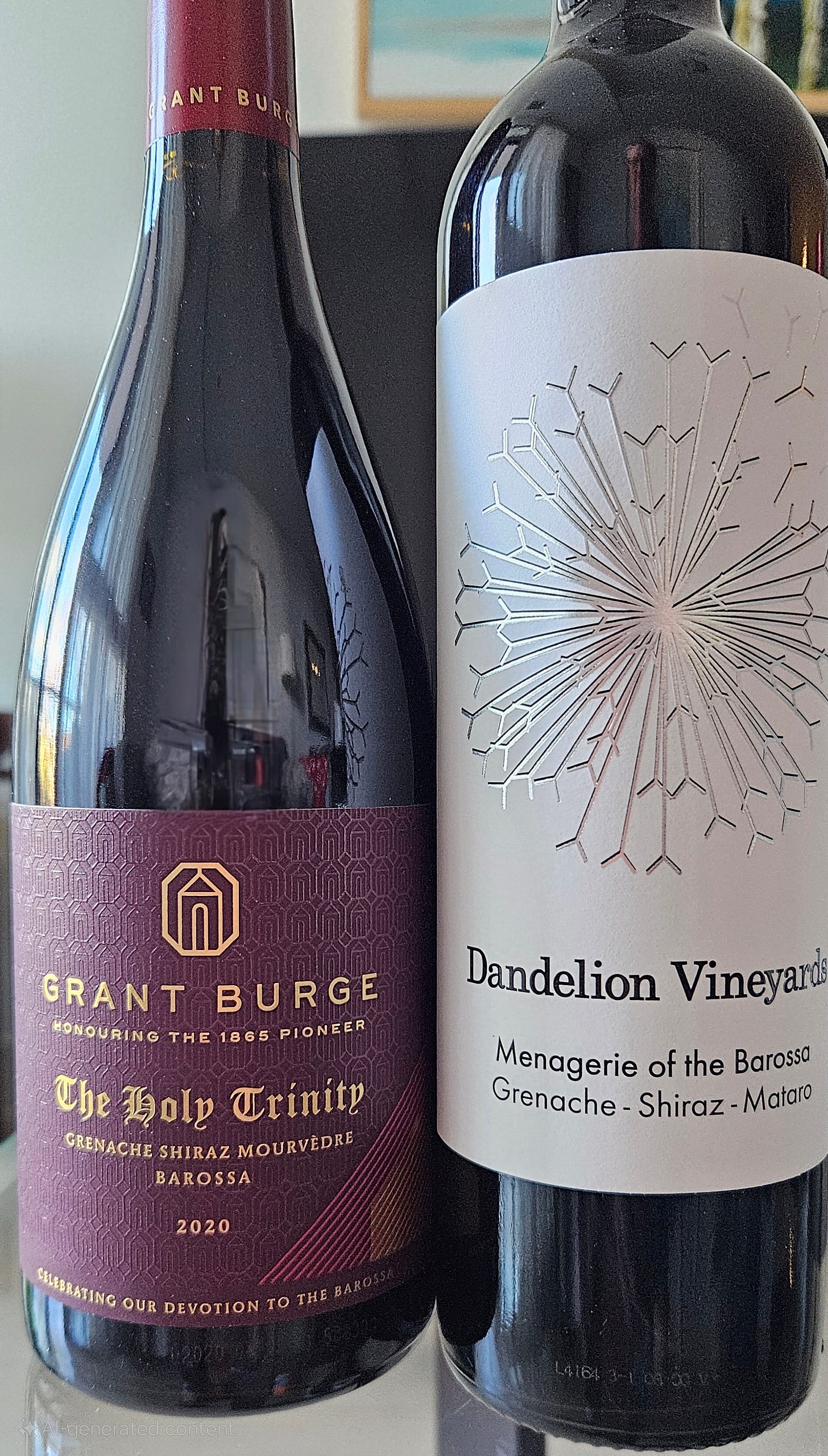In the eleven months I’ve been writing this weekly newsletter—one edition per month focusing on wine—I’ve never written about my favourite region, Côtes du Rhône. Partly, that’s because on my podcast I talked a lot about my love for wines from this region that I started to sound like a broken record. So, finally I am coming around to write about why I love wines from this region.
And as I am wont to do, I also like to explore how a certain varietal or blend is made in regions or countries outside of what is typical, just so that I can see how the grape or blend of grapes might taste different based on where they’re grown and who the winemaker is. Additionally, I like to explore a variety of price points so that you have some choice over how much you spend on a bottle of wine. Is that $50 bottle twice as good as a $25 bottle? What about the $16 bottle?
So, in keeping with those traditions, I present to you the classic Côtes du Rhône (CdR) blend of Grenache, Syrah, and Mourvèdre (aka, GSM.) This time, I’m comparing two wines from France, from two different sub-regions within Côtes du Rhône (Vacqueras, Plan de Dieu,) and two wines from Australia (Barossa Valley.)
The Grapes
The two main grapes in the Rhône Valley are Grenache (mostly planted in the south) and Syrah (mostly planted in the north.) Mourvèdre is the primary blending grape, but you’ll also find a dozen or so other grapes that are used for blending, including Cinsault, Marsanne, Roussanne and Carignane. Of note, one of the best known and premiere wines of the region, Châteuneuf du Pape, was traditionally made with a blend of up to 13 different red and white grapes, the AOC rules now allow up to 18 different grapes.
Grenache: This is the most popular grape in the Rhône Valley. In Spain, it’s called Garnacha. It mostly has red fruit flavours (raspberry, strawberry, cherry) and some spiciness (white pepper.) It thrives in the hot and dry climate of southern France.
Syrah: The second-most popular grape in the Rhône, it’s also widely known as Shiraz in Australia and is the 7th most planted grape worldwide. Many of us in Canada got our introduction to Shiraz with the influx of Australian wines in the ‘80s and ‘90s. This grapes gives us darker fruit and spice flavours like blackberry and black pepper. It has strong, firm tannins, so it can hold up to some ageing.
Mourvèdre: Also known as Mataro (in Australia and California) or Monastrell, it is what gives a GSM blend a lot more structure, high alcohol, and wild/gamey/earthy characteristics. It’s not normally bottled on its own, but as Mataro, can sometimes be found bottled in California.
The wines
Lets talk first about blends. While some people (mostly those who don’t know much about wine) think that a wine made with 100% of a single varietal to be superior, that’s really not true at all. Blending is done for several reasons, among them the fact that sometimes a single grape doesn’t have all the characteristics that the winemaker wants to have in their finished product. Blending allows for the best possible outcome, given that some wines are known for their body, others for their sweetness, some for their aromatics, others for their fruitiness or juiciness. And sometimes you’re drinking a blend without even knowing it (unless you read the back of the label, hint hint.) For example, wines that label themselves as simply “Cabernet Sauvignon” may in fact have up to 15% of one or more grapes added to it. All this to say, blends are good. In fact, I’d even say that blends are GREAT!
Alright, with that out of the way, here are the four wines I tasted, in the order I tasted them.
Only two of them are widely available here in Ontario right now. Using my Coravin (wine preservation system) I poured a small sample of each into similar glasses and labeled them 1-4 so that I wouldn’t get them mixed up.
Paul Jaboulet Aîné, Les Cyprès, Vacqueyras (2016) $28.95, 14.5% ABV
Rémy Ferbras Plan de Dieu, Côtes du Rhône-Villages (2022) $17.95, 14.2%, 3g/L
Grant Burge The Holy Trinity (2020), Barossa Valley, Australia, $50, 14.5%
Dandelion Vineyards, Menagerie of the Barossa, Barossa Valley, Australia, $21.95 3g/L 14.5% ABV
Besides being from two different countries, you’ll also notice the price points are vastly different in these four wines. The first time I (knowingly) tried a GSM blend was the Holy Trinity, many years ago (when it was about $35,) and I fell in love instantly. The name is a play on the fact that this blend is used in Châteuneuf du Pape (which translates to New Castle of the Pope) and is the signature blend of the Rhône Valley. But at $50 per bottle, this isn’t something I can afford to drink every week. Since then, I’ve tried countless GSM blends, mostly from France, and I’ve rarely been disappointed. You can get a really good bottle for $18-22, as evidence by the other wines I chose this month.
First, I will say that all four of these wines looked strikingly similar in the glass, with the exception being the Vacqueyras, though that was likely due to its age (8 years old.) I don’t have the best wine storage system, so that might have affected it over time. All of them were a deep ruby in colour, with the Vacqueyras bordering on garnet (slightly more orangey-brown.)
They all smelled very similar, with the Holy Trinity being a bit more gamey or earthy, and the Dandelion smelling a bit fruitier. Lots of red berries in all four glasses. They all had medium-high acid and a medium-long finish. There was a bit of lingering bitterness in the finish of all four, especially the Vacqueyras.
As expected, the younger wines—especially the Dandelion—had a much fresher taste. There was also a big difference between the drier “old world” wines from France, versus the juicier “new world” wines from Australia. I would say that the Dandelion was the most approachable of the four and that it will have wide appeal if you were to serve it at dinner.
Side note: I tried all four of these wines with my dinner of steak with mushrooms and onions over creamy mashed potatoes. The earthiness of the mushrooms and the meatiness of the steak were beautifully enhanced by all four these wines.
Final Verdict
I don’t like giving ratings, rankings, or scores to wine because individual tastes are so personal. I tend to think of it as “would or would not buy again,” which is a factor of how much I enjoyed the wine, and whether I thought it was worth the price. So, with that in mind, here is my final verdict on each:
Vacqueyras: Paul Jaboulet Aîné (pronounced “ay-NAY,” meaning, The Eldest or Elder,) is one of the premier producers in the Rhône Valley since 1834. They make fantastic wines. This one is not widely available anymore, so I wouldn’t be able to buy it again even if I wanted to. It was fine, and I might buy another Vacqueyras if I come across it in the liquor store, but I didn’t love this wine, just merely enjoyed it, and at $28, I probably wouldn’t buy it again. The first time I tried Vacqueyras was at Langdon Hall in Cambridge, ON back in 2017 (FYI, their wine list is 55 pages long!) My experience there was so exceptional, that I think it influenced me into buying this wine once I got home.
Plan de Dieu (God’s Plan - maybe fans of Drake would like this wine!): For the price, this was a decent wine. It was recommended to me from the product consultant at my local store. I told him that I was a fan of CdR wines and he suggested this one. I actually have another bottle on hand from this same CdR Village that is a dollar cheaper ($16.95,) so I’m eager to try that one to see how it compares. I would probably buy this again since it’s at the right price point and it was quite enjoyable.
The Holy Trinity: I still love this wine. The only things holding me back are the price and the limited availability. It seems to come and go at the LCBO once a year and then is gone again. It has a velvety mouth feel and the perfect balance of fruitiness and earthiness. It’s a splurge-worthy wine for me. Teaser: next month, I’m going to write about some of my favourite splurge-worthy wines for the Holiday season.
Dandelion Vineyards: This bottle was a lovely surprise the first time I tasted it a few months ago. I’ve had some of their other wines before (two Shirazes, one from Barossa, the other from McLaren, both in that $20 price range) and have enjoyed them. As I mentioned above, this wine is probably the most approachable of the four based on taste and price. I will definitely buy this one again.
Thank you for indulging me in my tasting and review of my favourite wine blend. GSM really is the “holy trinity” for me. What are your go-to, never disappoint wines?








